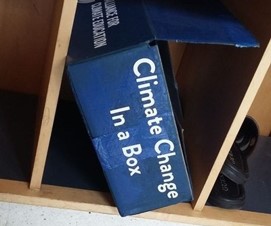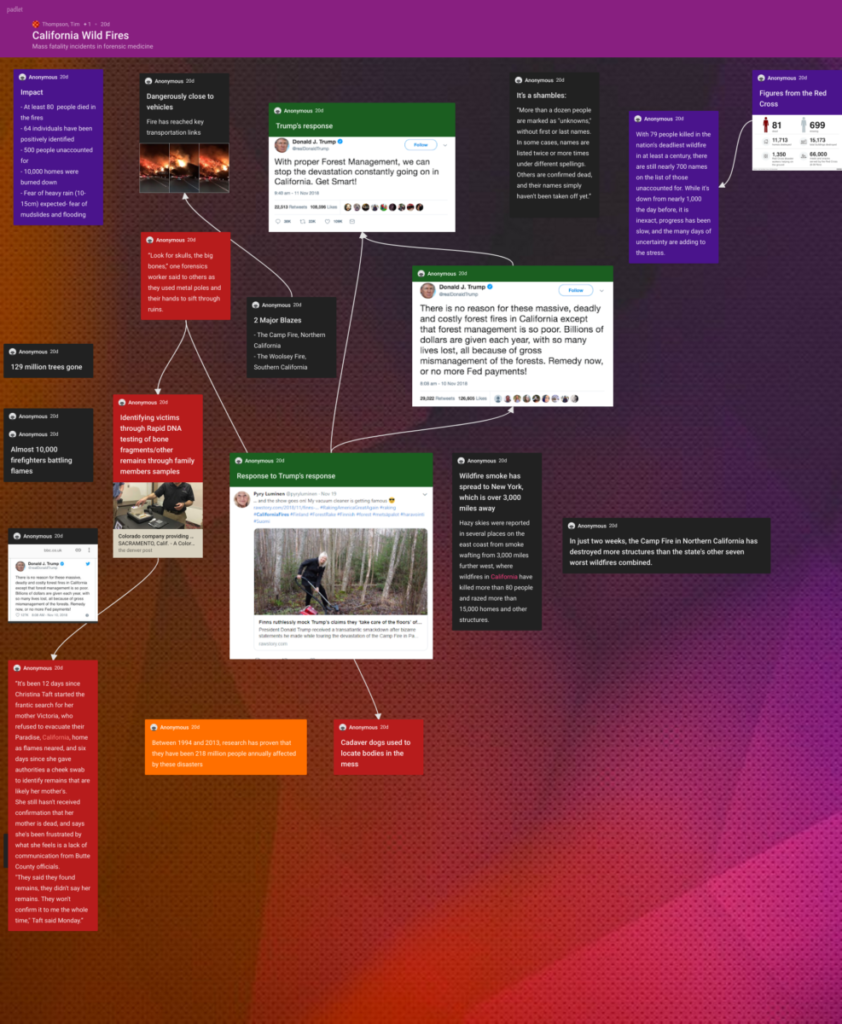
Now this may come as a surprise to many of you, and indeed those of a nervous disposition should sit down for this, but I am not perfect. And neither is my teaching. Sometimes my enthusiasm and personal interests get the better of me, and we end up going way off point in class. Thankfully we use a module evaluation process here which allows our students to go, “Tim, what the hell..?”. One of the comments I got last year, from a few students and outside of this evaluation process, was “Why are we discussing climate change in a forensic science course?”. Now that’s actually a really good question, and a valid point to raise. So I’m going to unpack it a little here. Now I’m not doing this to pick on anyone, but I think in retrospect I didn’t articulate the link clearly enough, which is why some of my students were understandably perplexed. So I’m going to see if I can do better here.
The climate change session occurs early on in our final year module, Forensic Ecology. This module has a broad syllabus but basically tries to do two things – give examples of how aspects of the environment can be used in forensic investigations, and to show how interconnected all of these ecological, geological and anthropological processes are.
First of all, by thinking of climate change it allows us to consider very long-term ecological changes. Things like Milankovitch cycles and previous Ice Ages. Or even the Little Ice Age, which sounds cute, but was still shit. This is handy, because it reiterates that ecological processes can have very long cycles. When we think of the forensic context, we always think of the here and now, and can lose focus on longer timescales.
Second, we had a look at how climate changes can effect some forensic disciplines specifically. So for example, some recent work has shown that insect species distribution is altering as a result of climate change: “In the last few years, however, the gradual warming of the climate has been changing faunal communities by favouring the presence of thermophilous species … Fauna [in Italy] is naturally shifting from south and east towards the north…” (Turchetto and Vanin, 2004). So how does this impact the work of forensic entomologists or palynologists? How are forensic disciplines which rely on associating ecological assemblages found on bodies or at crime scenes responding to changing distribution patterns of said botanical species?
Third, we thought about people. Bugs are all well and good, but there’s only so much enthusiasm I can muster for them. The thing about climate change is that is causes a change in climate. This can have significant impact on the environment and therefore on human activity. So we explored this a little more – using some archaeological examples because we can more easily observe the impact on human activity over these timescales. Iceland is a good example for aspects of this, because of its relatively recent colonisation and rich evidence of human activity and environmental change. We mainly looked at settlements by rivers or on the coast. We followed this up with more modern concerns, and discussed the challenges associated with forced migration as a result of climate change. The obvious comparison is with migration to escape violence and conflict – and the forensic implications of these, including the challenges of identifying undocumented refugees. We used the excellent Missing Migrants website to get a sense of the scale of these deaths, the countries most affected, and the forensic capacity to support this situation.
Volcanoes! I almost forgot that we discussed volcanic eruptions too. Volcanoes have a significant impact on climate – eruptions in 1809 and 1815 caused greater cooling than Krakatoa in 1883. Volcanic eruptions also provide a handy layer of sediment for dating purposes.
Finally, we also looked at how some specific effects of climate change could create challenging forensic contexts. Using Padlet, I asked my class to populate the page with comments, new articles and whatever interested them about the forensic implications of the wild fires that were occurring in California at the time. The results are here, and you can see their thinking about this issue:
So there we are. As is often the way with my sessions, we take a general theme but jump around a bit, bringing together concepts and discussions about different disciplines, methods and contexts in time and place. Hopefully this year I’ll be able to unite this together more coherently. Because its not like this issue is going away.
